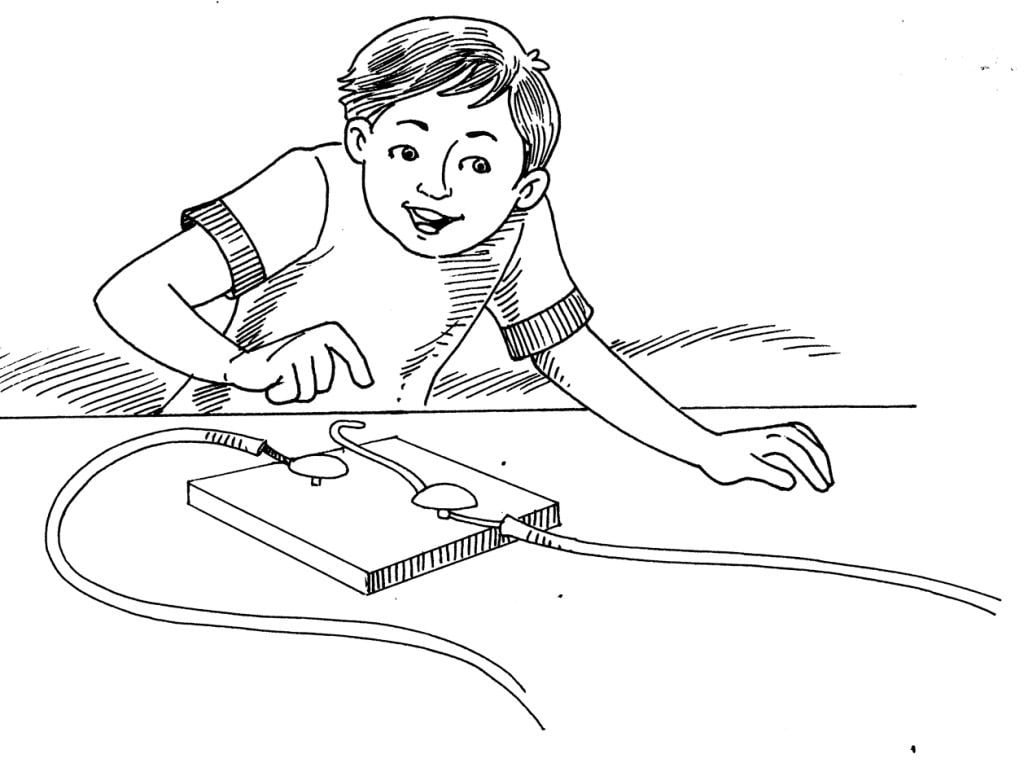
Take a look around you. Most likely, there’s a nearby wall switch. Although you can’t see it yet, the wall switch is connected to electrical wires that lead to a light fixture. When you flip the switch to the “on” position, the light goes on. Flip the switch “off’ and the light magically goes off.
Things Required:
A small block of wood
Two thumbtacks
Metal paper clip
Two connecting wires with each end stripped 1½ inches bare of insulation
Directions:
Position two thumbtacks several inches apart on a small block of wood. Push them partially into the wood, leaving only a small space between the heads of the tacks head and the wood surface.
Obtain two wires that have the insulation removed from both ends. Wrap a bare end from one of the wires around one of the thumbtacks. Push this tack into the wood to secure the wire.
Bend open a paper clip into an “S” shape. Slip one end of the hook of the paper clip under the other thumbtack. Wrap this same thumbtack with the bare end of the second wire. Push this tack into the wood to secure both the wire and the paper clip.
Make sure the paper clip extends over the other thumbtack. If not, bend it out some more. When you press down on the clip, it should make contact with the head of the first thumbtack. When you release, the clip should spring back up and “open” the circuit.
This Is What Happens:
The flow of electricity requires an uninterrupted path through which electric charges will move. The charges will stop flowing if there are any breaks in the path. It doesn’t matter where the break is. So long as the path is not complete, no current will flow.
A switch is a device that can open and close a circuit. In the “on” position, the switch closes the circuit and completes the route for flowing current. In the “off’ position, the switch places a gap in the path, which prevents any of the current from flowing.

